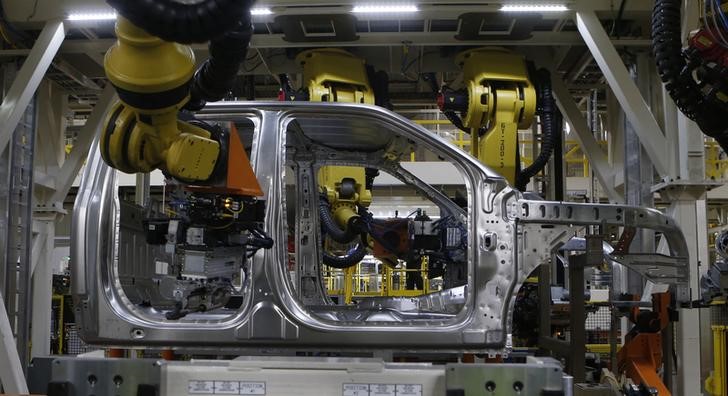By Lucia Mutikani
WASHINGTON (Reuters) - New orders for U.S. factory goods fell for a fifth straight month in December, but a smaller-than-previously reported drop in business spending plans supported views of a rebound in the months ahead.
Other data on Tuesday showing fairly brisk sales in January by the country's leading automobile manufactures also offered a silver lining for a sector that has taken a hit from weak global demand and falling crude oil prices.
"It suggests that activity will pick up in coming months," said Jennifer Lee, a senior economist at BMO Capital Markets in Toronto.
The Commerce Department said new orders for manufactured goods declined 3.4 percent as demand fell across a broad sector of industries. That followed a 1.7 percent decrease in November and exceeded economists expectations for a 2.2 percent drop.
The department also said orders for non-defense capital goods excluding aircraft - seen as a measure of business confidence and spending plans - slipped only 0.1 percent instead of the 0.6 percent drop reported last month.
Manufacturing is being constrained by weakening demand in Europe and Asia, as well as a strong dollar and falling crude oil prices, which have caused some companies in the energy sector to either delay or cut back on capital expenditure projects.
An ongoing labour dispute at the nation's West Coast ports, which has caused shipment delays, is also hurting activity.
Business spending on equipment in the fourth quarter was the weakest since mid-2009, helping to hold back the economy to a 2.6 percent annual growth pace.
In a sign of weakness, unfilled orders at factories slipped 0.8 percent in December, the first fall in 10 months.
The soft trend in business investment likely persisted early into the first quarter, with a report on Monday showing a manufacturing sector gauge falling in January.
But there is cautious optimism that firming domestic demand will limit the slowdown in manufacturing.
Auto sales increased 13.7 percent in January from a year ago to a annual rate of 16.66 million units. General Motors (N:GM) reported an 18 percent jump in sales, while Ford (N:F) said sales rose 15 percent. Sales at Fiat Chrysler Automobiles (MI:FCHA) gained 14 percent.
There was some good news in the factory orders report.
Shipments of non-defense capital goods orders excluding aircraft, used to calculate business equipment spending in the gross domestic product report, were revised up to show a 0.2 percent gain in December instead of a 0.2 percent fall.
Economists said that suggested capital expenditure in the fourth quarter was probably not as weak as initially thought.
Daniel Silver, an economist at JPMorgan, said real equipment spending now looks to have declined at a annual rate of 1.3 percent rather than the 1.9 percent pace the government reported last week.
"Oil and gas industries appear to be only partially responsible for the recent weakness in the data, and it is likely that the stronger dollar and weaker growth abroad are also weighing on activity," said Silver.
But any boost to GDP growth from more shipments of these so-called core capital goods orders was likely to be offset by a 0.3 percent fall in manufacturing inventories.

The first decline in factory stocks in 18 months suggested the contribution to growth in the fourth quarter from inventory accumulation could be lowered by as much as three-tenths of a percentage point, economists said.